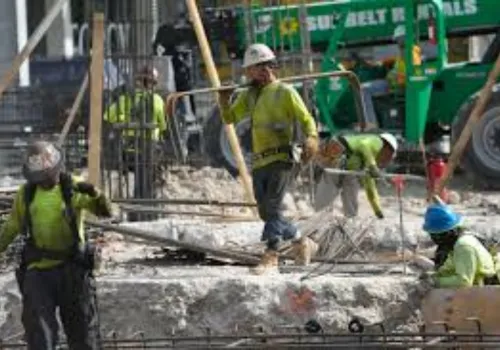
FLORIDA – The construction industry in Florida is currently facing a severe crisis, as skilled labor shortages, immigration restrictions, and rising material costs continue to plague the sector. This has resulted in slower project timelines, higher housing prices, and an increasingly strained economy.

One of the primary causes of Florida's construction crisis is the shortage of skilled labor. According to reports from Univisión, the retirement of seasoned workers with decades of experience has worsened the issue. For every three retirees, only one new worker is being trained, leaving critical vacancies across the sector.
"For every three employees who retire, only one is replaced, leaving vacancies that cannot be filled quickly," said an industry expert on labor shortages. The lack of training programs for the younger generation has further exacerbated the problem, limiting the flow of new talent into the industry.
The problem is made worse by immigration restrictions, which have reduced the influx of workers from other countries. The construction sector in Florida, traditionally dependent on immigrant labor, has been significantly impacted by these changes. Immigrants account for 38% of the state's construction workforce, higher than the national average of 31%.
The Trump administration's immigration policies have led to uncertainty and fear among workers, causing many to relocate to states with more lenient regulations or avoid construction jobs altogether for fear of ICE raids.

In addition to labor shortages, Florida’s construction sector is also grappling with skyrocketing material costs, which are making housing projects even more expensive. Construction leaders have pointed to the 25% tariff on imports from Mexico, China, and Canada imposed during the Trump administration as a key factor in this price surge.
“The tariffs have impacted the prices of essential materials such as steel, wood, and cement, which have all seen significant increases. This, in turn, has driven up the price of housing, making it even more difficult for families to afford homes,” said a Florida construction industry leader.
With higher material costs and fewer available workers, the construction industry in Florida faces a perfect storm of challenges that threatens the state’s ability to provide affordable housing.
The Florida Builders Association has warned that, by 2025, the state will need at least 439,000 new workers to keep pace with the demand for housing and infrastructure projects. Without addressing the labor shortage and mitigating rising costs, housing prices are expected to continue rising.
Construction companies are exploring potential solutions, such as implementing training programs for new workers and automating processes to increase efficiency. However, many believe that these efforts will not be enough unless immigration policies are relaxed, and stronger incentives for workforce training are introduced.
“Without more flexible immigration policies and increased incentives to train new workers, the construction industry and Florida’s economy will continue to struggle,” warned a construction industry spokesperson.
With a rapidly growing population and a housing crisis at the forefront of Florida’s issues, industry leaders are calling for comprehensive changes in both immigration policy and workforce development to ensure that construction projects can proceed without further delays. The state government, construction associations, and businesses must work together to address these challenges head-on and create a more sustainable future for the industry and its workforce.
Originally reported by Ciber Cuba Editorial Team.